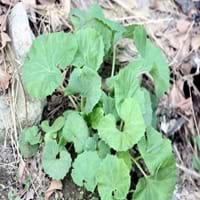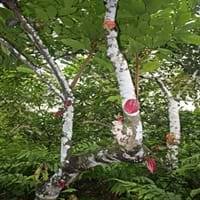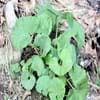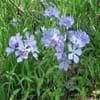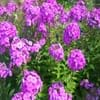Life Span
Perennial
Perennial
Type
Herbaceous Perennial
Tree
Origin
China, Japan, Korea
Mexico, Central America
Types
Not Available
Criollo, Forastero, Trinitario
Number of Varieties
Not Available
Habitat
Lake Sides, River side
Lowland, Tropical rainforest, Tropical regions
USDA Hardiness Zone
5-9
11-15
Sunset Zone
2a, 2b, 3a, 3b, 4, 5, 6, 7, 8, 9, 10, 14, 15, 16, 17, 18, 19, 20, 21, 22, 23, 24
H1, H2
Habit
Clump-Forming
Oval or Rounded
Flower Color
Light Yellow, Ivory
White
Flower Color Modifier
Bicolor
Bicolor
Fruit Color
Not Available
Gold, Burgundy, Dark Red
Leaf Color in Spring
Green
Light Green, Dark Green, Pink, Copper
Leaf Color in Summer
Green
Light Green, Dark Green, Copper
Leaf Color in Fall
Green
Light Green, Dark Green
Leaf Color in Winter
Not Available
Dark Green
Leaf Shape
Orbiculate
Broad, Unlobed
Plant Season
Spring, Summer, Fall
Spring, Summer, Fall, Winter
Sunlight
Partial shade, Full Shade
Partial Sun
Type of Soil
Clay, Loam, Sand
Loam, Sand
The pH of Soil
Acidic, Neutral, Alkaline
Acidic, Neutral
Soil Drainage
Poorly Drained
Well drained
Bloom Time
Early Spring, Late Winter
Indeterminate
Tolerances
Wet Site
Not Available
Where to Plant?
Container, Ground
Ground
How to Plant?
From Rhizomes
Seedlings, Stem Planting
Plant Maintenance
Medium
Medium
Watering Requirements
Keep ground moist, Requires consistently moist soil
Keep ground moist, Requires watering in the growing season
In Summer
Lots of watering
Lots of watering
In Spring
Moderate
Moderate
In Winter
Average Water
Average Water
Soil pH
Acidic, Neutral, Alkaline
Acidic, Neutral
Soil Type
Clay, Loam, Sand
Loam, Sand
Soil Drainage Capacity
Poorly Drained
Well drained
Sun Exposure
Partial shade, Full Shade
Partial Sun
Pruning
Cut or pinch the stems, Remove damaged leaves, Remove dead branches, Remove dead leaves
Prune to stimulate growth, Prune twice a year, Remove damaged leaves, Remove dead branches, Remove dead leaves
Fertilizers
All-Purpose Liquid Fertilizer, Requires high amount of nitrogen
Ammonia sulphate, Nitrogen
Pests and Diseases
Red blotch
Borers, Insects, Phytophthora, Red blotch
Plant Tolerance
Drought, Drought and Wet Site
Shade areas, Wet Site
Flower Petal Number
Not Available
Single
Foliage Texture
Bold
Coarse
Foliage Sheen
Glossy
Glossy
Attracts
Not Available
Not Available
Allergy
Not Available
Diabetes, Diarrhea
Aesthetic Uses
Beautification
Not Used For Aesthetic Purpose
Beauty Benefits
Not Available
Not Available
Environmental Uses
Air purification
Air purification
Medicinal Uses
Antiasthamatic, Expectorant, Miscellany
Anti-oxidant, Antioxidants, Asthma, Cancer, Cardiovascular problems, constipation, High cholestrol, Wounds
Part of Plant Used
Flowers, Stem
Leaves, Seeds
Other Uses
Not Available
Employed in herbal medicine, Used for its medicinal properties, Used in making beverages
Used As Indoor Plant
No
No
Used As Outdoor Plant
Yes
Yes
Garden Design
Bog Garden, Container, Water Gardens
Edible, Feature Plant, Fruit / Fruit Tree, Shade Trees, Tropical
Botanical Name
PETASITES japonicus 'Argentea'
THEOBROMA cacao
Common Name
Giant Butterbur, Japanese Butterbur, Variegated Butterbur
Cacao, Chocolate, Cocoa
In Hindi
Japanese Butterbur
कोको संयंत्र
In German
japanische Pestwurz
Kakaopflanze
In French
Japanese Butterbur
usine de cacao
In Spanish
petasita japonesa
planta del cacao
In Greek
Japanese Butterbur
φυτό του κακάο
In Portuguese
Carrapicho japonês
planta do cacau
In Polish
japoński Lepiężnik
Kakao roślin
In Latin
Japanese Butterbur
Cocos herba
Phylum
Tracheophyta
Magnoliophyta
Class
Magnoliopsida
Magnoliopsida
Family
Asteraceae
Sterculiaceae
Genus
Petasites
Theobroma
Clade
Angiosperms, Asterids, Eudicots
Angiosperms, Eudicots, Rosids
Tribe
Not Available
Theobromeae
Subfamily
Not Available
Byttneroideae
Number of Species
Not Available
Importance of Japanese Butterbur and Cocoa Plant
Want to have the most appropriate plant for your garden? You might want to know the importance of Japanese Butterbur and Cocoa Plant. Basically, these two plants vary in many aspects. Compare Japanese Butterbur and Cocoa Plant as they differ in many characteristics such as their life, care, benefits, facts, etc. Every gardener must at least have the slightest clue about the plants he wants to plant in his garden. Compare their benefits, which differ in many ways like facts and uses. The medicinal use of Japanese Butterbur is Antiasthamatic, Expectorant and Miscellany whereas of Cocoa Plant is Anti-oxidant, Antioxidants, Asthma, Cancer, Cardiovascular problems, constipation, High cholestrol and Wounds. Japanese Butterbur has beauty benefits as follows: Not Available while Cocoa Plant has beauty benefits as follows: Not Available.
Compare Facts of Japanese Butterbur vs Cocoa Plant
How to choose the best garden plant for your garden depending upon its facts? Here garden plant comparison will help you to solve this query. Compare the facts of Japanese Butterbur vs Cocoa Plant and know which one to choose. As garden plants have benefits and other uses, allergy is also a major drawback of plants for some people. Allergic reactions of Japanese Butterbur are Not Available whereas of Cocoa Plant have Diabetes and Diarrhea respectively. Having a fruit bearing plant in your garden can be a plus point of your garden. Japanese Butterbur has no showy fruits and Cocoa Plant has showy fruits. Also Japanese Butterbur is not flowering and Cocoa Plant is not flowering . You can compare Japanese Butterbur and Cocoa Plant facts and facts of other plants too.
